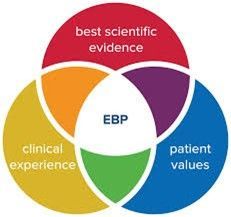Why Diagnoses Aren’t Always Accurate
When behavioral health clinicians develop treatment plans, they usually work from the diagnosis. This clinical finding comes from the assessment of the client, their symptoms, and what the group of behaviors appears to display. However, in many cases the clinician’s diagnosis is inaccurate, leading to improper treatment. While the diagnosis is valuable for billing and documentation purposes, it should be in sync with the client’s behaviors. And this process can be difficult. For example, in a list of the top 12 diagnoses for children and adolescents, the symptom “irritability” is listed for anxiety, bipolar disorder, eating disorder, oppositional defiant disorder, post-traumatic stress disorder, and reactive attachment.
Here are some reasons a client’s diagnosis are inaccurate:
1. The clinician falls in love with a diagnosis and makes the client’s behavior stick to their clinical conclusion. For example, if a therapist specializes in anxiety in the treatment of adolescents, they may see every child through a closed lens. Many children experience difficulty in fears and worries, but other factors can impact their symptoms besides anxiety, such as depression, substance use, or trauma.
2. Lack of knowledge. In a study published in 2008, a psychiatrist reviewed over 200 psychiatric consultations and found that the “accuracy of psychiatric diagnosis was the highest for cognitive disorders 60%, followed by depression 50% and anxiety disorders 46%, whereas the accuracy of diagnosing psychosis was 0%.” Not knowing the proper symptoms or signs of a condition can lead to misdiagnosis.
3. The diagnosis of the decade. Every 10 years it seems that clinicians find a diagnosis and stick with it rather than objectively see if it applies to a client. A real case example illustrates this problem. A child born in the 1980s was first diagnosed at age 5 with attention deficit disorder and given Ritalin to help them with their inattention. Later in the 1990s as an adolescent, they continued with behavior problems and then were diagnosed with bipolar disorder. Finally in the 2000s, with prolonged problems, the now-adult was diagnosed with intermittent explosive disorder.
4. Lack of understanding of differential diagnoses. For example, trauma and attention deficit hyperactivity disorder (ADHD) have several symptoms that overlap. Concentration, distraction, lack of listening, restlessness, and difficulty sleeping are behaviors clients with either condition have. Yet ADHD is a disorder of organization because the client lacks the internal structure to keep their lives manageable. But trauma is a disorder of stress because the client’s stress response does not function properly, causing their behaviors to range from withdrawal to rage.
When clinicians decide on a diagnosis, it has to be based on the cluster of behaviors that occur and how to differentiate between different conclusions.
Praxes offers treatment intervention software, Apogee. Coming in 2022, it will have a diagnostic decision tree for its users.




